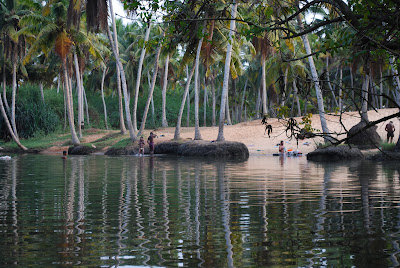Scientists and engineers occupy a unique and powerful position in this culture, and they always have. While kooks and quacks no doubt exist, scientists and engineers do important work in chemistry, atmospheric sciences, biology, physics, ecology, building and designing. But if you're a scientist or engineer reading this, it is likely that you have been educated to (or at least told to) just doing the science and engineering, and leaving the decisionmaking that stems from it to others--policymakers, lawyers, businessmen, and politicians, many of whom do not have the best interests of people and nature at heart. Scientists and engineers thus leave it to others, others who many not fully understand the implications of this knowledge, to decide what should be done about what we know, so scientists and engineers do not lose their "objectivity," so they do not cross the supposedly strict boundaries between scientific, reductionist research and the murky world of "values."
But in this glacier-melting, toxic tresspassing, obesity-inducing, mass-species-extinction, large corporate culture, scientists and engineers can no longer sit on the sidelines of decisionmaking. Traditional means of scientific communication have led, for example, to politicians undermining and denying climate science (although in this episode of This American Life, it becomes clear that many politicians fully accept climate science, but just do not admit it). Instead, given the incredible diversity of thought, skill, and knowledge they possess, scientists and engineers must take full responsibility for what they know and do, and that is to become front and center the faces of the radical social, political and economic change needed to align this culture and its laws with ecological holism and peace.
Fortunately, there are a handful of such brave men and women out there already, and Sandra Steingraber heads the list of courageous scientist activists. A poet, essayist, author, environmentalist and ecologist, Steingraber has written extensively (in Orion magazine, among other places) about the links between industrial chemicals released into the environment and human health impacts, specifically cancer. Recently, she has been intimately involved with the opposition to the extremely destructive practice of fracking, for which she was jailed. In a conversation with Dick Gordon on The Story, Steingraber says,
In the absence of a powerful human rights movement behind the science, I don't think we can move this forward. The world's most powerful industries are standing in our way. And so I think science needs to be coupled with a kind of activism, similar to what we saw with [the] Civil Rights [Movement], similar to what we saw with the Abolitionist Movement. And so, I feel inspired in the work that I do not just by the power of the data, whether it's on climate change, or on the growing evidence that we have linking childhood asthma to crummy air, [but also by how] Martin Luther King Jr. did what he did, and how my dad, at age eighteen, had to go off and fight global fascism even though at the time it looked like an overwhelming task...People under very desperate circumstances rose and said, "This is wrong."
I carry around this German name, Steingraber, and my dad [was] also German...and what I learned from my dad was to not be a "good German." If you see something is wrong because you have evidence, whether it is the kind of evidence that the French partisans had or whether it is evidence like I have as a biologist, we have a moral obligation to make sure that that evidence [leads to change]. You don't just say, "Here's the evidence," and that's your job, you're done. But if nobody is coming to take the evidence and turn it into change, then you have to do that yourself. It becomes your own responsibility.I hope to continue to develop these thoughts on the blog over the days and weeks to come; they formed an important part of my dissertation, and continue to be something I write about more academically. I hope to translate more of that writing here. I am sure many of you have thoughts on this very important issue, and I welcome them in the form of comments and even guest blog posts. Until then, I encourage you to listen to Gordon's full conversation with Steingraber, which I have posted below. You can also find the conversation on The Story's website, here.
Part 1 of Gordon's conversation with Steingraber.
Part 2 of Gordon's conversation with Steingraber.



















